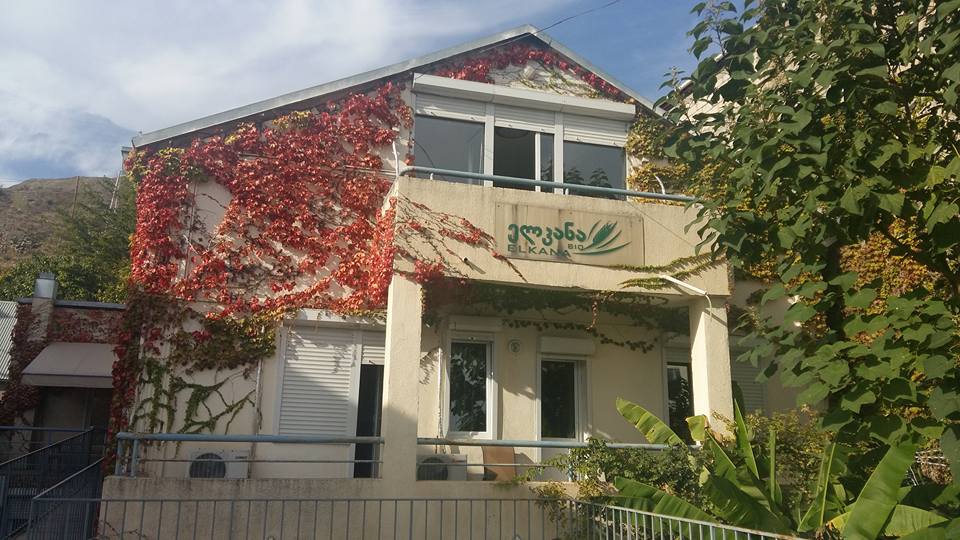Geographic Indication (GI) is a special designation for those delicacies whose unique qualities stem from their place of origin making them part of the world food heritage. While reflecting local food traditions, this label also helps to support small farmers, develop the rural economy and respect the cultural identity of the local people. In an exclusive interview with DevelopmentAid, Ia Ebralidze from Elkana shared the organization’s experience in exploring the potential of Geographic Identification for sustainable food value chains and the preservation of Georgian culture.
Geographic Indication for culture-driven rural economy
Culture is a cornerstone of authentic rural development and agriculture. In the context of food systems, cultural heritage includes different management systems for natural resources (such as Mexican Chinampas or Portuguese agroforestry called ‘Montado’), food traditions, diverse foods, ceremonies, and other local specifics that peoples naturally evolve with.
See also: Agro-silvo-pastoralism turns land healthy and prevents desertification in Portugal
Culture makes local food systems unique and therefore highly valuable. The way people interact with their environment, with each other, and the products that arise from this interaction have been recognized by international organizations in the form of GI:
“A Geographical Indication (GI) is a sign used on goods that have a specific geographical origin and possess qualities or a reputation that are due to that origin. GIs serve as useful tools for incentivizing sustainable consumption and production by informing consumers on specific features of products and production systems.” (Food and Agriculture Organization of the United Nations (FAO)
Long way to reviving traditional Georgian food types
GI is a label that not only offers unique taste experiences to consumers and promotes inclusive and sustainable food systems but also enhances rural development through tourism. As a matter of fact, Georgia is party to Lisbon Agreement for the Protection of Appellations of Origin and their International Registration and 39 Georgian products (including wine) are registered under Geographic Indications (GI).

The Association Elkana – Organic Farming & Rural Tourism Network in Georgia which has existed since 1994 is actively involved in using GI systems to support small farmers. It brings together more than 200 smallholding producers from different regions in Georgia who open their doors to visitors. Guests have an opportunity to stay on farm, taste local traditional food and wine while learning more about Georgian traditions and culture. According to Ia Ebralidze, Elkana:
“Developing and promoting Geographical Indications and other origin-linked labels for traditional products can help the country preserve its food heritage and biodiversity, while also raising producers’ incomes and driving economic growth. GIs can also “transform” the agrifood sector, making it more efficient, sustainable and inclusive (linking smallholders to markets), and reassuring consumers that what they are buying is safe and of high quality.”
Elkana has been working closely with small local producers to support them and “to explore the potential benefits offered by a well-developed GI system in the country”.
Fig.1. Georgian logos Protected Geographical Indication, PGI for Sulguni and Protected Appellation of Origin, PAO for Tushetian Guda

In the framework of the project, “Support to Sustainable Value Chains through the Development of Geographical Indications in the Dairy Sector of Georgia, 2017-2019”, supported by the FAO and the European Bank of Reconstruction and Development (EBRD), several activities have been undertaken to help to develop sustainable food chains in Georgia while promoting the unique traditional tastes of its food culture.
“The project worked in several directions and at several levels. At one level it consisted of working with Georgia’s national authorities to improve the GI institutional framework, including the way GIs are evaluated, registered and protected through an efficient certification and control system,” explains Ia.
Thus, Elkana was involved in the development of the logo for the Tushetian Guda Associacion and Sakrdze who are currently controlling those products. (Fig.1.).
One of the achievements of the project is the creation of an Inventory of 54 origin-linked products (also registered as GIs) and the identification of their potential to be considered part of the national food heritage. The Atlas sought to achieve two objectives: to increase the visibility of “traditional Georgian food products and the country’s rich culinary heritage and associated natural identity” while at the same time acknowledging the importance of farmers and processors as guardians of traditional knowledge and food heritage, and to “raise awareness of stakeholders, practitioners, and investors on how origin-linked products can serve as a driver for rural development and sustainable food systems”.
At the level of producers, the project “consisted of supporting the development of sustainable GI value chains through the improved specifications of two pilots (Sulguni and Tushetian Guda cheeses) produced by small Georgian producers,” adds Ia.
She goes on to explain that:
“traditional knowledge and production of Tushetian Guda was first endangered in the Soviet period when the main focus of the planned economy was on meat and wool production and cheese-making became almost illegal, restricted only to family consumption although it is a safe product, known for its quality for centuries”.
Elkana conducted a range of activities that started with a launching conference in 2017 raising public awareness about GIs which brought several stakeholders on-board. As specification of the product is a participatory process, it conducted consultation meetings and workshops for the characterization of Sulguni and Tushetian Guda (Fig.2.) specifics and helped producers to develop GI certification, improve the production process and start to build a marketing and promotion strategy. Field visits were also organised to observe the traditional production practices to be reflected in the specifications. For instance, one of the specifics of Tushetian Guda cheese is that “it is produced from whole raw milk of sheep, cow or their mixture, which is ripening in the “Guda” – a bag made from the skin of sheep, goats or calves, trimmed from inside”.
Improving the production process also included work on the food safety aspect which is among one of the most important for smallholding producers as many small farmers lack the capacity to comply with food safety measures in Georgia and are therefore restricted from the market.
“The project has also worked on the food safety aspect, jointly with the National Food Agency (NFA) and the Ministry of Environmental Protection and Agriculture to develop ad hoc food safety guidelines for Sulguni and Tushetian Guda; at legislative level, on the revision and upgrade of Decree n. 173 on food safety flexibility measures for small holders and traditional products, for the introduction in the Decree of Georgian PGI and PAO to be entitled for specific flexible rules”.
Last but not least, Elkana has been working with the HORECA (restaurants, hotels, grocery shops) sector to connect these with small farmers and to promote the unique Georgian delicacies.
Fig.2. Tushetian Guda cheese

“At this stage, we try to involve the producers in these local value chains so that they can sell their products directly to consumers, and so they don’t need a middleman,” explains Ia.
More about this can be found in the video, produced within the framework of this project, ‘Unique Georgian Taste – Custodians of Tradition’.

